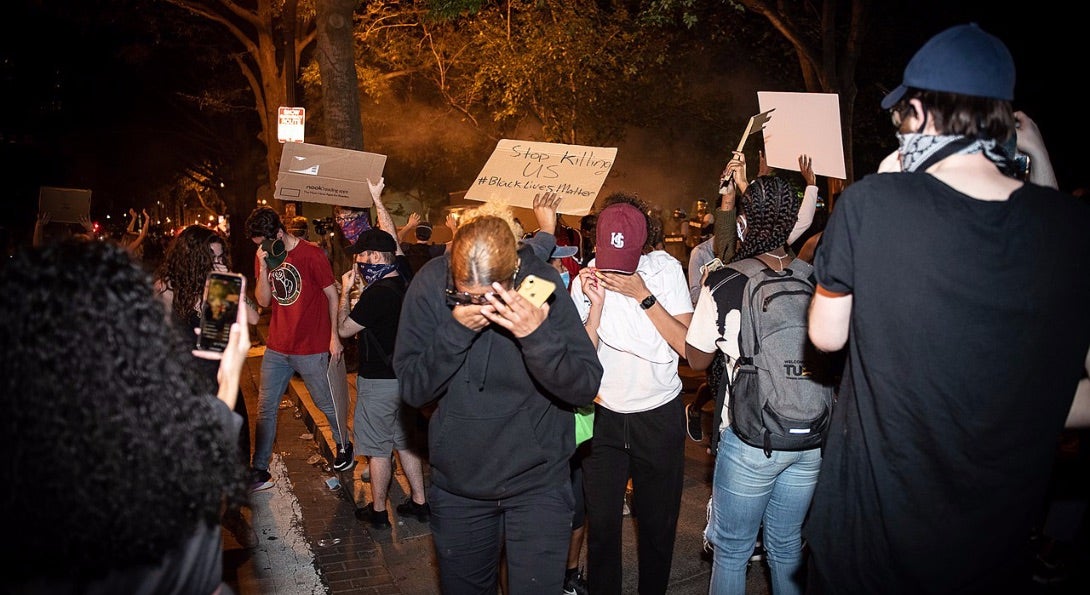Research examines civilian injuries in police encounters

Story text

Massive protests across the U.S. rocked cities in response to the deaths of George Floyd and Breonna Taylor and the shooting of Jacob Blake in police interventions. The details of these high-profile cases are well-known, but the context of the thousands of injuries that result from legal interventions is much less clear.
Research in the International Journal of Health Services, “A 5-Year Retrospective Analysis of Legal Intervention Injuries and Mortality in Illinois,” examines data from 2010-2015 in Illinois on injuries and deaths in legal interventions and finds many people injured are ultimately never placed in custody of law enforcement.
Alumna Alfreda Holloway-Beth, PhD ’14 in Environmental and Occupational Health Sciences, is the paper’s corresponding author. Holloway-Beth is the director of epidemiology at the Cook County Department of Public Health and a research assistant professor of environmental and occupational health sciences at the UIC School of Public Health.
“We use administrative data to surveil and quantify injuries and deaths captured through medical records to try to quantify what people term as police brutality,” Holloway-Beth said. “We’re trying to use our epidemiological skills to understand [CDC data] and use that to address one of the big social justice issues in our time.”
From 2010-2015, 8,384 people in Illinois were treated for injuries caused during contact with law enforcement. About 95 percent were treated as outpatients, but less than half were treated in hospitals with trauma units (45.7 percent). Among patients admitted to a hospital, the average length of stay was six days.
Data on outcomes after initial medical care calls into question the nature of interactions between injured civilians and law enforcement. Most patients, about 84 percent, were discharged home or to a different medical facility, rather than into an incarcerated setting. Existing data leaves some gaps: it is unclear if discharged patients were arrested and later arraigned while in the hospital, accidentally injured through indirect action, involved in the use of force when no crime was committed or involved in a crime that justified the use of force but did not result in charges filed.
But the authors note it is rare for arraignments to not take place in a courtroom and unlikely that so many charged individuals would not be transferred to a jail with an infirmary after reaching a stable condition in a community-based hospital.
Most injuries were not caused by firearms. Firearms caused only about three percent of all nonfatal injuries (though firearms caused about 87 percent of all deaths). The vast majority of injuries (78.3 percent) resulted from blows or manhandling. Examples include pushing or throwing civilians against objects, including the ground; submission holds, including sitting on the civilian or choke holds; maneuvers used to shackle citizens, including arm twisting and bending; blows to the civilian’s body using officer extremities; and falling and tripping. Injuries caused by a blunt object such as a baton or flashlight totaled only nine percent.
The analysis challenges some assumptions about people injured and killed in interactions with law enforcement. Among civilians who accessed medical care after a legal intervention, 83 percent were male but the mean age was 32.7, bucking stereotypes of younger, more risk-prone adults interacting with police. Black civilians were injured at a disproportionate rate, comprising about 43 percent of injuries in the study despite representing only 15 percent of the population in Illinois.
People with a mental health diagnosis, which could represent psychological health challenges, mental disorders and alcohol disorder, but only about five percent of the sample fit these definitions.
Holloway-Beth says a surveillance system like the Law Enforcement Epidemiology project at the UIC School of Public Health can be a significant step toward building solutions to the questions posed by this data. She notes the National Institute of Justice has mandated reporting from law enforcement agencies on injury data, but that data is not readily available. A non-biased information source should be a platform for addressing systemic issues of behavior in law enforcement agencies.
“We are at a time of the Black Lives Matter movement, a true collective, but we need mechanisms to know if things are changing,” Holloway-Beth said. “A surveillance system like this could be used to foster accountability and understanding.”
Co-authors on the paper include the School of Public Health’s Lee Friedman, PhD, associate professor of environmental and occupational health sciences; Linda Rae Murray, MD, MPH ’80, adjunct assistant professor of health policy and administration; and Rachel Rubin, MD, adjunct assistant professor of environmental and occupational health sciences and a senior public health medical officer with the Cook County Department of Public Health. Kiran Joshi, MD, senior medical officer and co-lead at the Cook County Department of Public Health, is also a co-author.